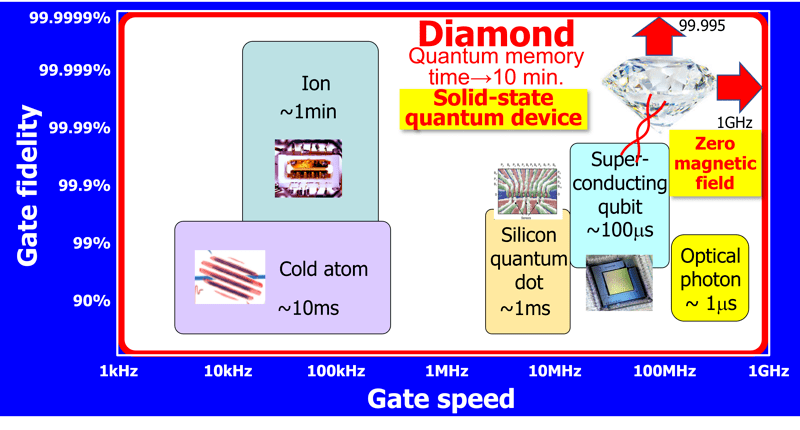Progress Report
Development of Quantum Interfaces for Building Quantum Computer Networks[2] Optomechanical Cavity
Progress until FY2024
1. Outline of the project
Although there are many candidates for quantum computers, the potential of diamond is second to none in other physical systems (Fig. 1). In this project, we aim to develop a superconducting optical quantum interface, in which superconducting microwave photons and optical photons are quantum-connected by diamond (Fig. 2), to realize a large-scale distributed superconducting quantum computer system. In this R&D theme, we will develop optomechanical cavities that will be the building blocks of the interface. We have achieved the following outcome.


2. Outcome so far
We developed advanced fabrication processes for diamond optomechanical cavities and successfully realized a diamond photonic crystal nanobeam cavity structure with a quality factor exceeding 1,000. In addition, we fabricated an optomechanical resonator designed by the Nomura Group (Fig. 3(a)), achieving the milestone initially set for FY2025 ahead of schedule.
We also developed integration technology for diamond hybrid platforms. Specifically, we successfully integrated the diamond optomechanical resonator onto a SiN waveguide (Fig. 3(b)), also achieving the FY2025 milestone ahead of schedule.

Subject 2: Photonic Crystal Optical Cavity Mounting
We have developed an interface that connects optical fiber to a diamond optomechanical cavity. The cavity is transfer-printed on a silicon nitride (SiN) waveguide chip fabricated by silicon photonics process, and optically coupled to the optical fiber. For the first prototype chip fabricated in 2023, light propagation from the fiber to the cavity was confirmed. Based on this result, a second prototype was fabricated in 2024, equipped with super-conducting wiring and microwave resonator. The fiber connection is expected to be stabilized at cryogenic temperatures, and optical photons are expected to be converted to microwave photons.

Subject 3: Phononic Crystal Sound Cavity
We designed a diamond optomechanical cavity that optimally balances theoretical performance and fabrication feasibility. To drive its resonant mechanical mode, we developed a scheme utilizing the electromechanical effect, allowing mode activation through external electrodes (Fig. 5). This approach ensures efficient excitation while maintaining compatibility with fabrication constraints.

3. Future plans
We will realize the diamond optomechanical cavity and integrate them with the quantum memory and the piezoelectric microwave cavity.